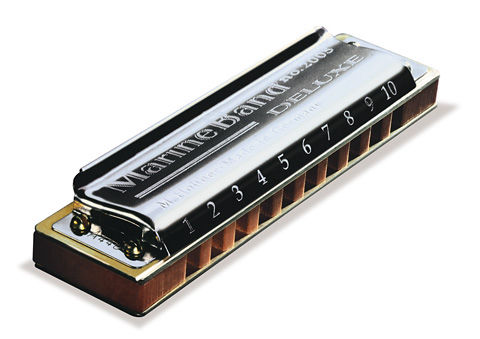

Welcome to this harmonica lesson. Remember that this lesson is part of my on demand harmonica class, an harmonica tutoring program that allows you to schedule your learning path balancing between real time lessons with the teacher and self paced study.
Now you can learn online using Skype or Hangouts, as well as following some emailed lesson that will keep you on the learning track while saving money.
TECHNIQUE 1: REPEAT THE SAME NOTES. With this technique a musical idea is presented and repeated identically or with a very small rhythmic or melodic variation. The sentence is underlined and generates in the listener the feeling that you are saying something important. Do not think that this technique can make execution monotonous, we must always keep in mind that the overal lsound perceived by the listener is given by what we play combined with the harmony below the solo. To put it another way, playing a C note has different meanings depending on where we are in the progression of chords played by the other instruments.

TECHNIQUE 2: TRANSLATED REPETITION. Unlike the previous technique, you do not repeat the same melodic line, but you transport it to another zone of the instrument: a very frequent example of the usage of the translated repetition is when you run the same sentence one octave higher or lower. This type of executionis a bit reminiscent of the call and answer concept that I will show you below in this lesson. The repetition translated on the diatonic harmonica, especially if you move on the different octaves, is an excellent example of technique because it requires the ability to think differently, about where the notes are, depending on whether you are on the higher octave or not of the harp.

TECHNIQUE 3: USING RHYTHM. The rhythm, when expressed with the alternation of notes and pauses, becomes himself an element of the musical expression. In improvisation we can change the rhythm for short periods, creating space and variation to the music. We canp lay on the beat, through the beat “flying” on it, or upbeat; they are all ways that give different sensations when you listen to them. Make of rhythm your great ally and you will become able to play in a way that is distinct from all the other musicians.

TECHNIQUE 4: PIVOT AND TARGET NOTES. The pivot technique and target notes are expressed by choosing a center or base, which can be a note or a small group of notes. Each phrasing executed will start or return to the chosen center. Also,this technique is used to underline a sentence making it more memorable by the listener.

TECHNIQUE 5: CALL AND ANSWER. With this technique you play a sentence and then another sentence that seems to be an answer to the previous one. In blues music, this kind of succession is widely used, if we analyze the chord progression of this musical genre, there’s a statement, an answer, another affirmation, another answer, then an external sentence followed by a closing sentence.

TECHNIQUE 6: INSISTANCE. You take one or more notes and repeat them by varying the rhythmic sense. The technique is effective to give the listener the feeling of someone repeating something by muttering.

TECHNIQUE 7: THE RUNNINGS. The last technique I tell you about is called «running», when you move your notes through the extensions of the instrument playing several notes and emphasizing the aspect of speed. There are different types of running that can be metaphorically assimilated to geometric images, for example zig zags, triangles, steps and straight lines. When you study musical patterns you are practically assimilating these types of runnings. An experienced improviser displays in his mind some shapes and executes them immediately afterwards. It’s a skill that you acquire over time and with a lot of training, but that brings a lot of satisfaction and ability to adapt to every situation in the musical context.

These were the «7 wonders of improvisation ». Whether it is with the harmonica, or with any other melodic instrument, including ourv oice, learning to improvise is something that elevates your musician being.
Now you can get your backing track here and practice! You will see improvements in a few days!
Reach me here:
Email: suonando@yahoo.com
Facebook: Click here!